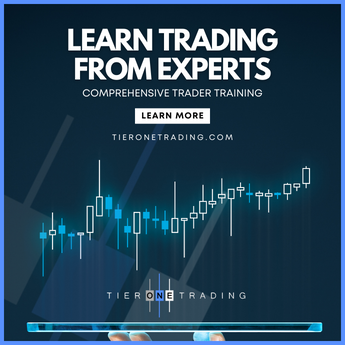Developing a Trading Edge: Strategies for Market Success
Introduction
In the competitive world of financial trading, having a trading edge can significantly increase your chances of success. This edge, defined as a set of unique capabilities or insights that a trader possesses over others in the market, can come from various sources—ranging from sophisticated analytical techniques to deeper psychological resilience. The importance of cultivating a distinct trading edge cannot be overstated, as it differentiates successful traders from the rest. This detailed examination aims to explore the essence of a trading edge, discuss five distinct types and their implementations, and guide on how to integrate these edges into a coherent trading strategy that aligns with personal and market dynamics.
The Concept of a Trading Edge
A trading edge goes beyond mere tactics; it involves a deep understanding of market mechanics, individual psychology, and risk management. It is the strategic advantage that allows a trader to make superior decisions, anticipate market movements more accurately, and manage adverse situations more effectively than competitors. Developing a trading edge requires not only technical skills and market knowledge but also a disciplined approach to trading and an ongoing commitment to learning and adaptation. Whether it’s through advanced analytical models, faster execution systems, or superior risk management strategies, a well-defined edge helps traders exploit opportunities that average traders may not even notice.
1. Informational Edge
An informational edge is perhaps the most straightforward but challenging edge to maintain. It involves having access to critical market information before it becomes mainstream knowledge. This does not suggest trading on insider information, which is illegal, but rather on being quicker in assimilating and reacting to public information. Techniques might include developing advanced algorithms that can parse earnings reports faster than human competitors or establishing a network of industry contacts who can provide early insights into market trends.
2. Technical Analysis Edge
Developing a technical analysis edge involves mastering chart patterns and statistical indicators that can predict future market behavior. This edge is built on the hypothesis that historical trading activity, such as price movements and volumes, can indicate future trends. Traders might use a variety of technical tools such as moving averages, MACD (Moving Average Convergence Divergence), or RSI (Relative Strength Index) to identify potential entry and exit points. The key to refining this edge lies in backtesting—a method of testing trading hypotheses using historical data—to ensure reliability and consistency in real-time trading.
3. Psychological Edge
Perhaps one of the most critical yet overlooked edges is the psychological edge. Trading, by its nature, can be emotionally taxing, and maintaining discipline is fundamental. A psychological edge involves developing mental resilience to withstand market pressures, such as fear of missing out (FOMO) or the anxiety of loss, and executing trades based on logic rather than emotion. Techniques for enhancing this edge include mindfulness training, regular psychological self-assessments, and setting strict trading rules that are adhered to without exception.
4. Speed Edge
In environments where trading decisions need to be executed in milliseconds, having a speed edge can be crucial. This edge is often seen in algorithmic trading where high-frequency trading algorithms can make transactions faster than humans can process information. Developing this edge involves investments in technology such as high-speed internet connections, direct links to exchange servers, or proprietary trading platforms that can execute orders with minimal latency.
5. Fundamental Analysis Edge
Unlike technical analysis, the fundamental analysis edge is based on understanding the intrinsic value of financial assets. This edge requires a thorough comprehension of broader economic indicators, business performance metrics, and financial statements to forecast future asset performance. Traders might specialize in specific sectors or markets to deepen their expertise, using this nuanced understanding to predict long-term market trends that are not immediately obvious to the average market participant.
Integrating Multiple Trading Edges
Successful traders often do not rely on a single type of edge but integrate multiple edges to maximize their strategic advantage. For instance, combining fundamental and technical analysis can provide a more holistic view of the market, allowing traders to make more informed decisions. Likewise, blending a psychological edge with advanced informational tools can help in maintaining discipline while capitalizing on fast-moving opportunities.
Conclusion
Developing and maintaining a trading edge in the forex market is an ongoing process that requires dedication, discipline, and a continuous desire to learn. By understanding and integrating different types of trading edges—informational, technical, psychological, speed, and fundamental—traders can significantly enhance their ability to succeed in the competitive world of currency trading. As markets evolve and new technologies emerge, the nature of these edges may change, but the need for a well-defined trading strategy remains constant. For those willing to invest the time and resources, the pursuit of a trading edge is not just a pathway to financial success, but also a commitment to professional excellence in the trading arena.

























